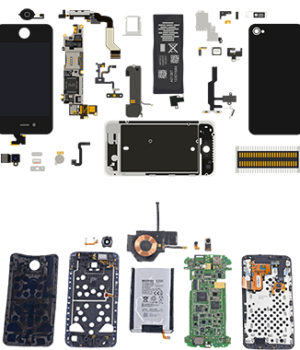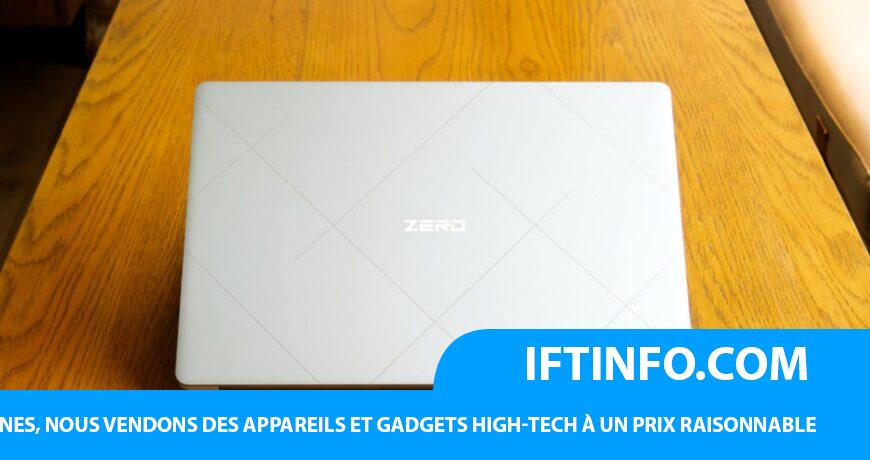IFTINFO – Infinix ZeroBook 13 (13900H) review laissez un commentaire
[ad_1]
The Infinix ZeroBook 13 is the successor to the previous generation ZeroBook 12 model. If you’re wondering if the numbering stands for the generation of the notebook or the display size then it’s neither. Instead, the number refers to the generation of the Intel CPU inside, with the new ZeroBook 13 being equipped with Intel’s latest 13th gen models.
The model we have here is the flagship in the series and also the most interesting one by far. Featuring a Core i9-13900H, 32GB memory, and 1TB SSD, the ZeroBook 13 is kitted out like a high-end notebook but comes in at an astonishing price of INR 81,990 ($989). This makes it the most powerful and well-equipped notebook in its price range, with most other models with similar specs priced well over INR 100k.
Design
The ZeroBook 13 has the same basic design as the previous generation model. Largely inspired by the MacBook Pro models of yore, the design features a silver aluminum construction throughout. The lid has a few flashy markings on it with an illuminated Zero logo.
The choice of logo seemed quite curious at first since most people wouldn’t be familiar with this branding. ‘Infinix’ itself isn’t a particularly well-known name in the notebook space, let alone their sub-brand ‘Zero’. When asked about it, Infinix argued that they wanted to showcase what is essentially their halo brand but eventually conceded that it would make more sense to have the Infinix name there instead.
I was also less sure about the flashy markings on the lid for what is supposed to be a mature, professional-grade product. Perhaps it is a way to stand out from the crowd but it is quite aggressive and distracting from the otherwise clean appearance.
Lift the lid and you are greeted with the now familiar black chiclet keyboard and large trackpad with a fine speaker grille on the side. The interior is certainly cleaner and less aggressive, if derivative.
On the left are two USB-C ports, only one of which supports charging the laptop. There is also a USB-A 3.0 port with HDMI 1.4 and a DC power connector for the charger.
On the right side is another USB-A 3.0 port along with a microSD slot, headphone jack, and a slider that switches between the three performance profiles.
The bottom of the laptop features ventilation for the dual fans inside. The air is pulled in from the back and exhausted out through a vent near the hinge. I am not particularly fond of this method of exhausting the hot air as it causes turbulence as the air exits from this cramped space and also the vent closes when the lid is closed, which makes it unsuitable to use the notebook with the display closed and connected to an external display.
One cool design feature is a row of red LEDs, which turn on whenever you put the laptop in the Overdrive performance mode using the switch on the side. The other two profiles don’t get any lighting. I wouldn’t have minded green lighting for the Economy mode and white lighting for the default Balanced profile.
The ZeroBook 13 is a reasonably well-built machine. The aluminum construction gives it a premium look and feel. The lid has a nice tension to it and moves decisively with minimal flex. The only part of the design that feels a bit flimsy is the flex on the area above the keyboard. This doesn’t affect the area below as there is no flex on the actual keyboard.
Display and Sound
The ZeroBook 13 has a 15.6-inch, 1920×1080 resolution 60Hz IPS panel. Infinix claims 100% sRGB coverage and 400 nits of peak brightness. There is no HDR support nor is there a touchscreen.
In my testing, I found the gamut coverage for sRGB to be around 98%, which is pretty good. However, both Adobe RGB and DCI-P3 were limited to 76%, making the display unsuitable for wide-color work.
The display does have very good color calibration, with an average dE of 0.7 in the color checker test. Gamma compliance also tracked well to the 2.2 standard. However, the white point of the display was set too cool at 8500K, which is far too blue compared to the D65 standard of 6504K.
Display performance
The display manages to get reasonably bright indoors, with a tested max brightness of 370 nits. Contrast was typical for an LCD with no local full array dimming, coming in at 700:1. Viewing angles were great and there was no noticeable panel inconsistency. However, there is some light bleed around the bottom left corner when viewing the display on a black screen in complete darkness.
Finally, the display is also limited to just 60Hz. Motion performance isn’t great but also not terrible and the image looks decently clear in motion for things like scrolling through web pages and photos.
Overall, the display on the ZeroBook 13 is perfectly fine for everyday use but I did expect better from a machine with professional aspirations. You will need to do hardware calibration for better white point and grayscale accuracy and even then you cannot do any wide color work.
The audio on the ZeroBook 13 comes from a four-speaker system with 2x low-frequency drivers and 2x high-frequency drivers. Despite the inclusion of the low-frequency drivers and the DTS Audio Processing app, the sound from the speakers is still quite tinny. The speakers do get quite loud but the sound is never balanced enough to make them usable for music or movies.
Apart from the grilles next to the keyboard, speakers also seem to fire from the intake vents at the bottom of the laptop. This causes the sound to become muffled if you keep the laptop on a soft surface compared to a desk. You shouldn’t be doing this anyway as it blocks the fans on the bottom but we know everybody still does this no matter how often you tell them not to.
Keyboard and trackpad
The chiclet-style keyboard on the ZeroBook 13 has a familiar layout and design. Despite the added width of the notebook, you don’t get a numpad. Instead, there is a row of scrolling buttons on the right.
The function buttons do double duty with shortcut functions when you press and hold the Fn key. There is no way to switch these keys to make the secondary function the default, so if you use the secondary shortcuts often you always have to press the Fn key.
The keyboard on the ZeroBook 13 is comfortable to use with decent travel and feedback. The keys remain firm and there is no wobble or rattle. The keys are a bit on the smaller side but it wasn’t an issue for me personally. Those used to larger keyboards or have larger fingers may disagree.
The keyboard features white LED backlighting. The lighting is fairly even and has two brightness levels. Unfortunately, there is no way to have the lighting stay on permanently as it always automatically turns off after a few seconds of disuse. It also just completely turns off if the notebook has been sleeping for a while and you have to use the shortcut key to turn it on manually.
The sizable touchpad below the keyboard has a glass surface and feels smooth to the touch. The trackpad is hinged at the top, meaning it is at its clickiest at the bottom edge and then progressively stops moving as you go upwards.
The trackpad on the ZeroBook 13 was very inconsistent. It really does not track well and also does not respond well to fast swipes or gestures. It also just becomes extremely erratic at times and the only way to fix this is to restart the machine. I had to resort to using a mouse full-time as it just became too unpleasant to use after a while.
Hardware and connectivity
The ZeroBook 13 series comes equipped with Intel’s latest 13th generation of CPUs, including the Core i5-13500H, Core i7-13700H, and the Core i9-13900H.
Our review unit came with the 13900H, a 14-core processor with 6 performance cores and 8 efficiency cores with a total of 20 threads. This chip can boost up to 5.4GHz and consume up to 115W under load. You also get integrated Intel Iris Xe graphics, which is the only GPU on this machine.
Our test configuration was also fully loaded. There was 32GB of 5200MHz LPDDR5X memory with 1TB PCIe 4.0 NVMe M.2 SSD. While the memory is non-upgradeable, there is a slot provided for an additional M.2 SSD.
As mentioned before, you get dual USB-C ports, dual USB-A ports, full-size HDMI 1.4, and a headset jack. There’s also 2×2 tri-band Wi-Fi 6E and Bluetooth 5.2. You also get a 1080p webcam and a built-in microphone.
Performance
The ZeroBook 13 has very good performance, courtesy of the 13900H on our review unit. The CPU never leaves you wanting for more performance in everyday tasks, so everything from web browsing, working with documents, watching media, and switching between multiple applications is fast and effortless.
Where the ZeroBook 13 is lacking is in graphics horsepower. The integrated Intel Xe Graphics GPU isn’t capable of much more than video decoding and simpler image and video editing. Working with more complex or RAW video files proves to be a bit much for the system and it’s best if you stick to simpler HD projects with fewer effects. 3D rendering in Blender is also tough with no native GPU rendering API support like CUDA on Nvidia GPUs, causing all projects to run on the CPU. Audio production projects will also need more than the 32GB memory the system comes with.
Cinebench R23
Single core
1992
Multi core
15952
Multi core (10 minutes)
14923
Geekbench 6
Single core
2797
Multi core
14343
OpenCL
17420
Blender
Classroom
06:30:96
7-Zip
Compression
96266
Decompression
97790
Corona 10
Rays/s
4999435
PCMark 10
Essentials
11730
Productivity
8260
Digital Content Creation
8082
Browser benchmarks (Edge)
JetStream 2
300.528
Speedometer
314
Octane 2.0
94295
Gaming is tough but not impossible. The Xe Graphics could run older games like CS:GO, Valorant, and GTA V as well as any 2D games with 100+ FPS. However, most newer AAA 3D games are out of the question.
This limits the usability of the ZeroBook 13 to mostly a very capable office machine. The lack of dedicated graphics and higher memory options means you are unlikely to get much production work done and the display is also not color-accurate enough for that purpose.
The cooling on the ZeroBook 13 was quite good for the computing performance onboard. The fans do get audible and also stop rather abruptly when the temperature drops below a threshold, which makes them hard to ignore. However, the machine does not lose much of its performance even when running flat out, which is a testament to the cooling on offer. The keyboard and trackpad area also remain comfortable to touch under load.
Battery Life
The ZeroBook 13 has a 70Wh battery, which Infinix claims provides an ‘all-day’ battery life without getting into specifics.
In my testing, I got 5-6 hours of use out of the machine in the default Balanced mode while working on this review and also while watching the occasional YouTube video. The display was set to 70% brightness throughout and all audio was played through the notebook speakers.
The Eco mode should be able to get at least 8 hours of battery life with the display brightness reduces, which probably fits some definition of all-day battery life. Overall, the battery life on the ZeroBook 13 is acceptable if not exceptional.
Pricing
The Core i9 model we tested here is priced at INR 81,990 and is only available in one configuration with 32GB memory and 1TB storage. The i7 model is available in 16GB+512GB and 32GB+1TB configurations for INR 64,990 and INR 69,990, respectively. The i5 variant is available only in 16GB+512GB configuration for INR 51,990.
Conclusion
The ZeroBook 13 is a good notebook for office work and students. It has a large, bright display that is perfectly fine for documents, web browsing, and watching content. The keyboard is decently comfortable and the battery is good enough to get you through most of your day.
The lack of discrete graphics and a more color-accurate and high refresh rate display makes the ZeroBook 13 unsuitable for content production work and gaming. The trackpad is also extremely unreliable and requires more software work to be usable.
At INR 81,990 for the i9 model, the ZeroBook 13 is well-priced compared to its peers but I would recommend most buyers to consider the cheaper i7 model instead as it should be perfectly adequate for the use cases this machine is good for and also have better battery life.
[ad_2]








